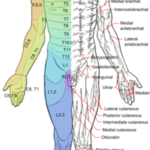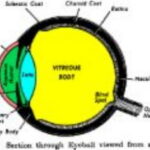The eye and the sense of sight is perhaps the most specialized and highly developed sensory part of the body’s nervous system. The eye itself and the nerve pathways that carry the sensations back to the brain are all subject to conditions that may affect vision adversely.
Causes
Most severe forms of visual disturbance tend to occur in later life. The most common include cataracts, retinal detachment and glaucoma. Abnormalities in the blood vessels within or just outside the brain may also result in problems with vision (for example, the results of a stroke or cerebrovascular accident). Trachoma, an infection that starts in the eyelids but which can readily spread to the normally clear surface of the eyeball (cornea), is the commonest cause of blindness in the world today.
Abnormalities related to the surface of the eye or the shape of the lens are the commonest causes of reduced visual acuity as they affect the ability of the eye to accurately focus light onto the retina, the delicate light-sensitive layer at the back of the eye.
Light rays enter through the cornea, the clear window at the front of the eye. The cornea acts as the main focusing instrument for these rays, and they are further focused by the lens so that they fall exactly on the retina.
The lens acts as a ‘fine tuner’. Its thickness, which mainly influences its focusing, can be varied by means of the ciliary muscle. The retina then converts this focused light into a nerve impulse which is transmitted back through the optic nerve, and then along other special pathways to a special area in the brain which interprets these nerve impulses as what is ‘seen’.
Hypermetropia
Long-sightedness, or hypermetropia, occurs when the lens is unable to thicken sufficiently, that is, to increase its surface curvature, or the eye is too shallow or short from front to back, so that images can only be focused clearly at a point somewhere behind the retina, as shown.
People who experience hypermetropia can usually cope with viewing things at a distance, as the appropriate light rays do not have to be ‘bent’ so much by the lens to allow accurate focusing on the retina. They do, however, have difficulty in focusing light rays coming from close objects. In reading or other close work, such as knitting or writing, there may be a blurred image. The abnormality can be corrected by the use of glasses with a convex lens (one that is thickened in the center), which bends the light rays inwards before they6 reach the lens of the eye.
Myopia
Short-sightedness, or myopia, is the condition in which the light rays are focused in front of the retinal surface. Here the lens of the eye can focus on close objects, but not with those at a distance. This is the most common defect of vision that occurs in late adolescence and early adulthood. The abnormality is corrected by the use of glasses with a convex lens (thicker in the central part).
Presbyopia
The problem of presbyopia occurs when the lens begins to lose its elasticity, irrespective of whether it was previously too wide, too narrow, or normal. This usually begins in varying degrees after the age of 40, and is part of the normal process of ageing.
The first symptom of presbyopia is the need for reading glasses; but as the loss of elasticity becomes more marked, ‘distance glasses’ may also be required. At this point people affected may benefit from bifocals. These are glasses which have two different lenses, the lower being used for close work, and the upper for viewing objects in the distance. Occasionally a third lens for ‘intermediate distance’ vision may be inserted to form trifocals.
Astigmatism
The condition known as astigmatism occurs when the corneal surface of the lens is imperfect. The perfect corneal surface should have a curvature which is identical in all planes or directions. The curved surface of the retina is perfectly spherical, and as it is the cornea which is the main focuser of light may defect in a particular plane may produce an imperfect retinal image. This will be perceived by the person as ‘blurring’. Glasses with specially designed lenses may be required to counteract the curvature defects in the cornea, and are successful in most cases of more severe astigmatism.
Contact lenses have become more popular in recent years, both for cosmetic reasons and also for practical ones. Some people with unusual cornea curvature however, are unable to use them.
Source:
Common Vision Defects,www.firstoptic.co.uk
DEFECTS OF THE EYE, www.chm.bris.ac.uk


